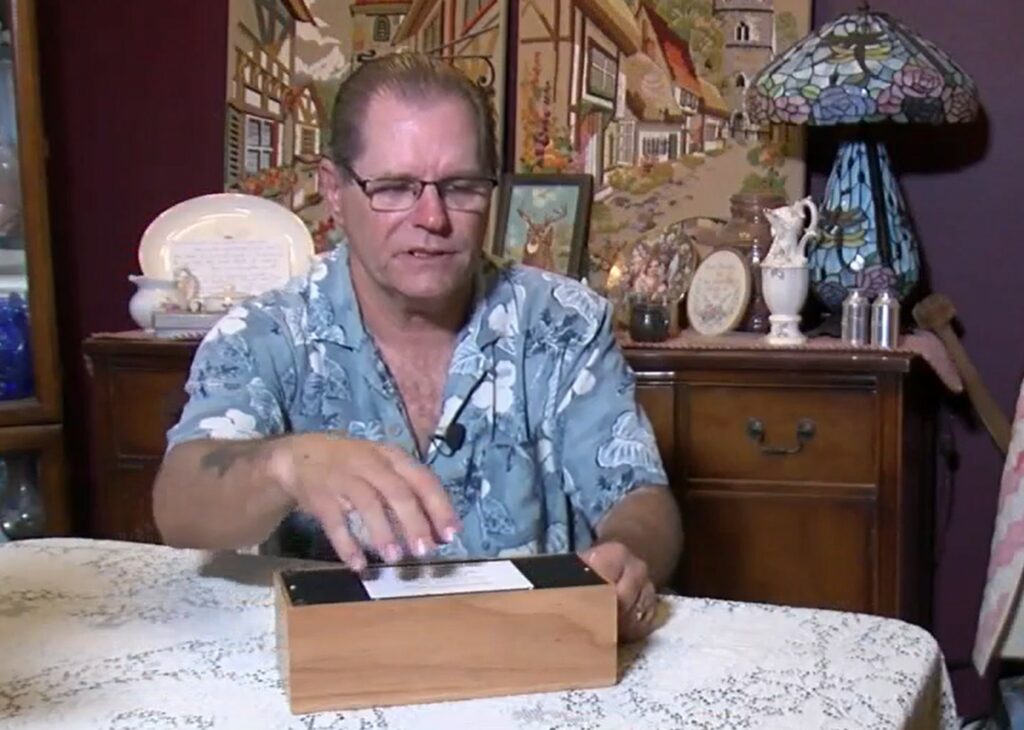Jim Stauffer, a man from Arizona, is suing a body donation company after discovering that his mother’s body had been used in military bomb tests. Doris Stauffer, who passed away after suffering from Alzheimer’s disease, had her body donated for medical research. Jim had specifically requested that the company use her remains in Alzheimer’s research. Instead, the company used her body in explosive experiments to study the effects of roadside bomb blasts.
Background of the Donation
Before her passing in 2013, Doris made her wishes clear: she wanted her body to help others suffering from Alzheimer’s disease. Jim found the Biological Resource Center (BRC) in Phoenix, Arizona, which promised to honor his mother’s desire by using her body for Alzheimer’s research. Jim trusted that the company would respect his mother’s wishes, believing she would contribute to the advancement of medical knowledge.

BRC assured Jim that they would handle Doris’s remains respectfully. The company promised that they would use her body for Alzheimer’s research purposes only. Jim believed that he was fulfilling his mother’s last wish by donating her remains to a reputable program.
Discovery of the Bomb Test Use
In 2016, Jim made a shocking discovery. A reporter contacted him with information that his mother’s body had been used in a military experiment involving bomb blasts. Doris’s remains had been sold to the military, where they were used to simulate explosions on the battlefield.
These bomb tests aimed to improve safety measures for soldiers and study the human body’s reaction to explosive force. However, Jim never gave permission for his mother’s body to be used in such experiments. He had consented to research that could improve medical care for people with Alzheimer’s disease, not military tests.
This revelation devastated Jim. His mother’s body, which he had entrusted to science, had been treated with a complete disregard for her wishes. This betrayal affected Jim and his family deeply, as they believed they were helping medical research and not contributing to violent military experiments.
The Lawsuit Against the Biological Resource Center
Following the discovery, Jim filed a lawsuit against the Biological Resource Center and its owner, Stephen Gore. In the lawsuit, Jim accuses BRC of fraud and breach of contract. The company’s actions violated the agreement Jim had made with them, and they misled him about the intended use of his mother’s remains.

Jim’s legal team argues that BRC failed to disclose the actual use of Doris’s body, despite the instructions being for the purpose of Alzheimer’s research. The lawsuit seeks to hold BRC accountable for deceiving Jim and causing him emotional distress. Jim’s attorneys claim that BRC acted negligently by selling his mother’s body without his consent and using it for purposes contrary to their agreement. The case sheds light on the lack of regulation in the body donation industry, raising questions about how these companies operate.
Jim’s legal team also argues that BRC failed to uphold ethical standards in handling human remains. They believe that the company should face severe penalties for its unethical practices.
Read More: 41-Year-Old Man with Early-Onset Alzheimer’s Shares His First Symptoms
The FBI Investigation into BRC
The Biological Resource Center has been the subject of multiple investigations. In 2014, the FBI launched an inquiry into BRC’s activities. Investigators found that the company had sold body parts and human remains for various uses, including military tests. Authorities also discovered that BRC had mishandled many bodies, leaving them in unsanitary conditions and engaging in practices that violated ethical guidelines.
The FBI’s findings led to criminal charges against Stephen Gore, the owner of BRC. The investigation revealed that BRC had sold bodies to military contractors and other clients without the consent of the families. Despite these violations, the company continued to operate for years, with little oversight or regulation.

The investigation sparked widespread outrage, especially as the public learned more about the company’s exploitation of body donors. Jim’s lawsuit is part of the growing legal backlash against companies like BRC, which have operated in a largely unregulated industry.
Lack of Regulation in the Body Donation Industry
Jim’s lawsuit brings attention to the lack of oversight in the body donation industry. Although the government heavily regulates organ donation, it does not impose strict rules on whole-body donation. The industry lacks sufficient regulation, which causes many families to remain unaware of how others will use their loved ones’ remains.
Many body donation programs fail to disclose the intended use of donated bodies. As a result, families may unknowingly consent to using their loved ones’ remains in experiments that contradict their wishes. Jim’s case has sparked a debate about the need for stronger oversight and transparency in the body donation industry.
Advocates for stricter regulations argue that donation companies must follow the same ethical standards as other medical research organizations. They believe that donors and their families deserve full disclosure and the ability to trust that others will treat their loved ones’ remains respectfully.
Ethical Concerns and Public Trust
The use of Doris Stauffer’s body in a military bomb test raises serious ethical concerns. The case highlights the importance of informed consent in body donation. Families should make the decision to donate a body based on a clear understanding of how it will be used, and they should not receive misleading information about the intended purpose.

The Stauffer case also highlights the need for greater transparency in the body donation process. Donor families must know exactly how body donation programs will use donated bodies and have the right to withdraw consent if they disagree with the proposed use. Programs must treat human remains ethically to maintain public trust.
Jim’s fight for justice emphasizes the importance of ensuring that donation programs adhere to ethical guidelines. The public must trust that their loved ones’ remains will be treated with the dignity and respect they deserve.
Impact on the Body Donation Industry
Jim’s lawsuit could have a lasting impact on the body donation industry. The case has brought widespread attention to the unethical practices that some companies engage in. As a result, many families may become more cautious about donating bodies because they fear that others will misuse their loved ones’ remains.
The Stauffer case has led to calls for stronger regulations and better oversight of body donation programs. If the legal system holds companies like BRC accountable, it could lead to significant changes in the industry. Advocates hope that increased transparency and ethical standards will restore public confidence in the body donation process.

In the future, families may ask for more detailed information about how programs will use donated bodies. Some may choose to donate only to specific programs that guarantee ethical handling and transparent practices. The case could also inspire the creation of a regulatory body to oversee body donation programs, ensuring that they operate with the highest standards of care and respect.
Conclusion
The story of Jim Stauffer’s lawsuit against the Biological Resource Center has exposed the dark side of the body donation industry. The case raises serious ethical and legal questions about consent, transparency, and the treatment of human remains. It also highlights the urgent need for stronger regulations and oversight to protect families who donate bodies for research.
Jim’s fight for justice could lead to meaningful reforms that ensure body donation companies act ethically and transparently. Moving forward, the public must trust that others will treat their loved ones’ remains with dignity and respect. The body donation industry must adapt to ensure that similar incidents never happen again.
Read More: Compound Found in Common Spice Could Help Fight Alzheimer’s

